Polish Lemon Babka
Ingredients
for the babka:
- 1 ¼ cups (180g) raisins
- ¼ cup (60ml) rum or brandy
- boiling water
- 3/4 cup milk 180g
- 1 tablespoon (10g) instant yeast 11g
- 2 tablespoons sugar from the 3/4 cup listed below
- 3/4 cup (150g) granulated sugar
- 1 tablespoon vanilla extract
- 6 large egg yolks room temp
- grated zest of 1 lemon
- grated zest of 1 large orange
- ½ teaspoon fine sea salt
- 4 cups (500g) flour spooned and leveled not scooped
- 2 sticks (230g) soft butter
for the glaze:
- 1 cup (120g) powdered sugar
- 1 tablespoon lemon juice
- 3/4 tablespoon water
Instructions
-
Soak the raisins: Add the raisins and rum into a medium bowl. Stir well then pour boiling water over to cover the raisins. Set aside and leave to soak for 1-2 hours (at least 1 hour).
Leave the butter and egg yolks on the counter to warm up 1 hour before you plan on making the dough.
-
Bloom the yeast: Warm up the milk until 100-110°F (38-43°C) (pleasantly warm to your finger, it can’t be too hot) then stir in the yeast and 2 tablespoons of sugar. After about a couple of minutes you should see the yeast is starting to ‘bloom’ (will be frothy/foamy). If the yeast isn´t frothy – it´s not working, you need to start over.
-
Knead the dough: Into a large mixing bowl, add the remaining sugar, vanilla, egg yolks, lemon and orange zest, salt, flour, and milk-yeast mixture. Mix with w stand mixer fitted with a dough hook attachment (speed 2 on Kitchen Aid) for about 5-7 minutes or until well combined.
-
Incorporate butter: Slowly start adding butter, about 2 tablespoons at a time, while mixing at speed 2. When you see the butter is almost incorporated into the dough, add another 2 tablespoons and repeat with the remaining butter. The whole process of adding butter should take about 10 minutes.
-
Finish kneading the dough: After this time, the dough will be still loose, soft and sticky. You need to kneed it further (on speed 2) for about 15-20 minutes (Yes, that long, this is not a typo). The reason for this is that such a rich yeast dough takes much longer to knead/develop gluten that gives the dough its elasticity than a dough that has less butter/fat in it).
After this time, the dough should no longer stick to the sides of the bowl or your hands, it should be silky smooth, and elastic. It should pass the “window pane test” – take a small piece of the dough and stretch is slowly as much as you can. The dough must be thin enough to pass light through it and should not tear (=good gluten development). If your dough is tearing, just knead it longer until it achieves correct consistency.
Please note that the dough consistency and window-pane test are shown on the video, that is on top of the recipe card.
-
Add raisins: strain the raisins through a sieve (discard the liquid). Place on a plate lined with paper towels, pat dry with paper towels. Knead the raisins into the dough (it´s easier to do by hand than with a mixer).
-
First rise: Form a smooth dough ball, put it back in the bowl, cover the bowl tightly with plastic foil, and place in a warm place for about 2 hours or until doubled in volume (I’m putting it in a turned off oven with a light on).
-
Grease a 10 or 12-cup bundt pan with butter (I used a 10 cup /25 cm (measured at the top) bundt cake pan).
-
Second rise: Take the risen dough out of the bowl and knead it for 30 seconds. Stretch the dough into a log, place it in the bundt pan, pinch both ends together. Wrap tightly with plastic foil and let rise for 40 minutes or until the dough reaches the top of the pan.
-
Place the wire rack on the lowest shelf of the oven (the babka will be quite tall). Preheat the oven to 350°F (175°C).
-
Bake the babka for 50 minutes or until a thermometer shows 195°F (90°C) in the upper part of the babka (while the babka is still in the baking pan). I´m covering it loosely with a piece of aluminum foil 15 minutes before the end of the baking time because it can get too dark.
The baking time may vary depending on the oven (every oven bakes differently) and baking pan (if you have a larger bundt pan with a bigger hole in the middle the babka will probably be done a little bit sooner).
-
Invert the bread on a cooling rack and let cool completely (it will take at least 1 hour maybe longer, make sure the inner part of the babka is also cooled).
-
When the babka is cooled, make the glaze by whisking powdered sugar with lemon juice and water until thick glaze forms.
-
Pour the glaze over the babka. Let the glaze set a bit then cut the babka into servings with a serrated knife.
-
Enjoy!
Notes
- Keep this babka tightly wrapped in plastic foil. It will be good for even 5 days but a little bit dryer. It can also be frozen.
- How to measure flour: I’m using the “spoon and level method” so 1 cup of flour in my recipes weighs 125g. Fluff the flour by stirring it in the bag/flour container with a spoon. Spoon the flour and sprinkle it into your measuring cup. Sweep off the excess flour with the back of a knife. I really recommend using a digital scale for measuring flour for perfect and consistent results!
- Calories = 1 serving (1/12 of the recipe). This is only an estimate!
-

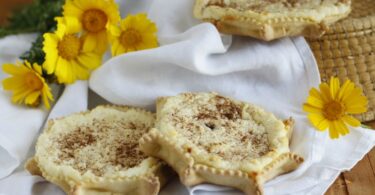
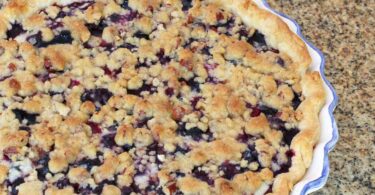
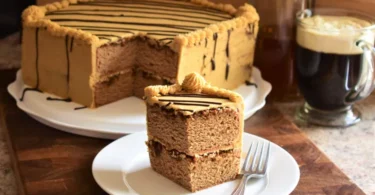
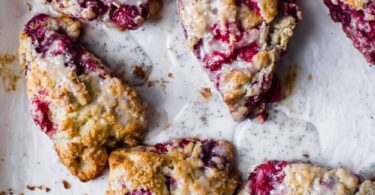
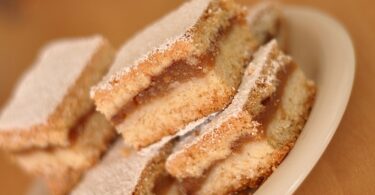
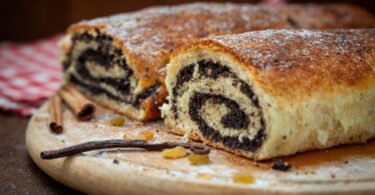
Leave a Comment